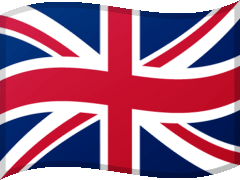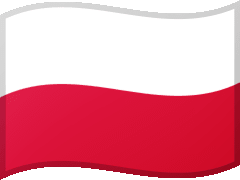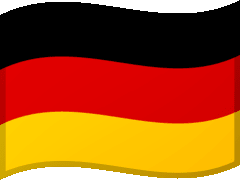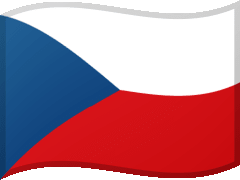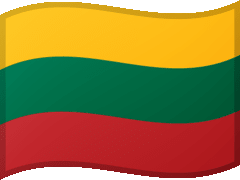Łukasz Kamiński
1990 – year one.
Our memories about the fall of communism are dominated by the events which took place in the year 1989. We talk about the round table talks in Poland, the “Baltic Chain”, the fall of the Berlin wall or the velvet revolution in Czechoslovakia. Meanwhile, many key events actually took place in the following year. It was in fact the year 1990 when the Europe that we know nowadays was being born.
There is no doubt that the year 1989 was the turning point, the “annus mirabilis” so to say. At the same time, it is worth remembering that that it was not immediately possible to realise the magnitude of the changes and their consequences. On 18 November, just a little over a week after the fall of the Berlin wall, the European Council gathered to hold an informal meeting. The leaders of the states which were part of the European Communities (the predecessor of the European Union) declared, on the one hand, their willingness to support democratic changes in the Eastern part of the continent, while on the other hand, they confirmed the stability of the “existing alliances and borders”. It was apparently assumed that the Eastern Bloc would continue to exist, simply reformed in one way or another. Similarly, the leaders of the two superpowers – George W. Bush and Mikhail Gorbachev, who met at the beginning of December 1989 at the Malta summit – considered, for instance, whether a joint organisation of Olympic Games in 2004 by..... both German states would be a good symbol of the relaxation of tensions.
Secret files and first elections
At the beginning of 1990, the round table talks were held in the Democratic Republic of Germany between the communist authorities and the opposition. One of the key issues was that of the omnipotent secret police agency – the Stasi and the fate of the documents it had gathered. On 15 January, upon the call of the 'New Forum', the major organisation of the opposition, thousands of people occupied the building of the Ministry of State Security in Berlin. This, as well as prior occupations of Stasi headquarters in other cities, ultimately led to the files being made available to the citizens. In other countries, this process was much longer and not without heated debate. The first institutions dedicated to providing access to the documents of the communist security apparatus were established as late as the end of the decade.
A few days later the recently ousted Bulgarian dictator, Todor Zhivkov, was arrested in Sofia. He was accused of numerous crimes. Soon, however, the arrest was replaced by house arrest, while trials, which were resumed several times, finally ended with an acquittal in 1996 . Zhivkov's case symoblises the fate of legal settlements with communism across the entire region – contrary to the initial hopes for justice, most communist criminals avoided penalty, and party leaders (except for the short-lasting leader of the Socialist Unity Party of Germany (SED) Egon Krenz) were never imprisoned.
Meanwhile, however, the first free elections in decades were held in more and more countries. The series was initiated by the German Democratic Republic, with Hungary joining one week later. The time for Romania came on 20 May and for Czechoslovakia on 8 and 9 June. The following day, elections were held in Bulgaria. Interestingly, Poland, which initiated the transformation in Central Europe, had to wait until Autumn 1991 (although local government and presidential elections took place in 1990).
Electoral campaigns, though run in an atmosphere of hope and enthusiasm, gave the societies emerging from communism a foretaste of the political conflicts, which awaited them in the years to come. The elections themselves also brought the first disappointments, especially in Bulgaria and Romania, where, in fact, recent communists were able to stay in power. The brutal pacification of the anti-communist protest in Bucharest by the police and miners who were brought in specifically for this purpose (14-15 June, the so called mineriad) led to fatalities. These events were a harbinger of strong social conflicts, which took place in many countries in this difficult period of transformation.
In Czechoslovakia, the elections were won by two formations formed during the hectic days of November 1989 – the Czech Civic Forum and the Slovak Public Against Violence. Despite attempts at reforming a common state aimed at greater independence of both of its parts, soon the rapid process of the “velvet divorce” began, resulting in the establishment of the Czech and Slovak Republics on 1 January 1993.
Difficult reforms and European aspirations
Poland, which had lost its leading position in political reforms over time, strengthened its position as a leader in economic transformation at the beginning of 1990. In fact, this happened as a result of a package of legal acts, popularly referred to as the Balcerowicz plan, as this was the name of the then deputy prime minister. In addition to making the economy even more market-oriented and also taking into account the stabilisation of the currency, the reform enabled, among other things, the bankruptcy of state-owned enterprises. In the long run, these changes allowed for the healing of the economy, however, in the short-term, the reform entailed, above all, considerable social costs. The most prominent of them was an unemployment rate which rose from 0.3% to 6.5%, and kept on increasing even more in the following years. Gross domestic product fell significantly, and exports within the former Eastern Bloc collapsed.
Similar phenomena, to a smaller or greater extent, occurred in all the countries of the region in the first half of the 1990s. The price for the transition from a centrally planned economy to a free market economy was paid mainly by the societies. The chance for enlivening the economy was seen, among others, in privatisation, which began soonest in Hungary (January 1990). This process also turned out to be plagued by abuse and corruption, exacerbating the social frustration caused by economic difficulties.
A popular phrase in 1990 was the slogan of “the return to Europe”. Irrespective of the dispute, whether the Central-Eastern part of the continent had ever even left it, this was an expression of the willingness to join the process of economic and political integration which had already lasted for decades. The Polish Prime Minister, Tadeusz Mazowiecki, was one of the first to openly formulate such a proposal. In January 1990, at the meeting of the Council of Europe, he said: ”Perhaps, the ‘return to Europe’ is a phrase that is not strong enough […] we should rather talk about the rebirth of Europe”, pointing out at the same time, on behalf of the entire region, that “we still have quite a lot to offer Europe. […] We know the price of Europeanness, the European norm, which is currently inherited by the people of Europe, without even paying inheritance tax. […] Therefore, our contribution to Europe is our faith in Europe”.
With such openly expressed pro-European aspirations, the cooperation which had so far existed within the framework of the Warsaw Treaty and Council for Mutual Economic Assistance was collapsing. They officially ceased to exist in the middle of 1991.
However, the road to a united Europe would not be a short one. The first group of countries from Central-Eastern Europe joined the European Union in the year 2004, another one in the year 2007. Less time was needed to obtain membership to NATO (the Czech Republic, Poland and Hungary had already acceded to join that organisation in 1999). The process of European integration required the fulfilment of many conditions, from the marketisation of the economy and the building of a functioning democracy to numerous changes in law.
Much more time was needed to change the mentality shaped by decades of Communism and build a civic society. To some extent, this process is still going on today.
The road to independence
On 11 March 1990, the Lithuanian Supreme Council adopted the Act of restoration of the State of Lithuania, declaring the restoration of independence lost after the occupation of the country by the Soviet Union in 1940. At the beginning of May, Latvia decided to take a similar step, and in January 1991 - Estonia. The Soviet authorities did not accept these actions; in January 1991, unsuccessful interventions took place in Vilnius (14 dead) and Riga (6 dead). In a referendum held in March 1991, the three nations confirmed their strong determination to regain independence.
In August 1991, putschists who briefly seized power in Moscow wanted to interrupt the ongoing dissolution of the Soviet Union. Paradoxically their unsuccessful action brought a completely reverse effect, speeding up the processes of disintegration. Belarus and Ukraine, among other countries, proclaimed their independence. Soon after, the Unites States recognised the independence of Lithuania, and other countries followed in their footsteps. At the end of December 1991, the Soviet Union ceased to exist. In addition to the typical problems resulting from political and economic reforms, the Baltic states, especially Lithuania and Estonia were struggling with another challenge – a large Russian minority made up of those people who had arrived in these countries during nearly 50 years of occupation.
The course of the collapse of Yugoslavia was much more dramatic than the fall of the Soviet Union. Despite the fact that it had been building its own type of communism and had not been part of the Soviet bloc since 1948, a crisis in the system occurred at a similar time. This was further exacerbated by the tensions between the peoples which comprised the state, whereby any conflicts were suppressed as long as the regime was strong. In spring 1990, the elections in Slovenia and Croatia were won by newly established non-communist political parties. In December, the vast majority of Slovenians opted for a referendum for the proclamation of independence. In the case of both of these countries, this happened in June 1991. In response, the Yugoslavian army, controlled by Serbs, attacked both republics. This sparked bloody conflict which lasted many years. In addition to Croatia, particularly fierce fighting took place in Bosnia and Herzegovina. In addition to a great number of casualties, the war in the territory of the former Yugoslavia was characterised by many crimes against civillians.
The unification of Germany
Still in the first weeks after the collapse of the Berlin Wall, it seemed that the road to the unification of Germany would be long. The leaders formulated cautious opinions, fearing the negative consequences of haste in the democratisation process of Central-Eastern Europe and the warming of East-West relations. However, the rapid transformations in respective countries, the complete decline of East German communists and the weakness of the Soviet Union made acceleration of the unification process possible. Also the will of the East Germans themselves was unequivocal – the CDU-affiliated “Alliance for Germany” received almost half the votes in March elections.
However, the issue of the unification of the two German states, established on the basis of post-war occupation zones, required the consent of the four allied states. In May 1990, the negotiations in the ”two plus four” formula were initiated – on one side there was the German Democratic Republic and on the other side there were France, the U.S., Great Britain and the Soviet Union. These negotiations ended with a treaty signed in September, according to which, Germany, among other things, recognised its existing borders and made an obligation to reduce its army, resign from certain types of weapons, and in exchange, it would gain full sovereignty.
The unification took place on 3 October 1990, generating enthusiasm that was similar to that caused by the fall of the Berlin Wall. In practice, however, it was more like the absorption of a weaker partner by the Federal Republic of Germany. Furthermore, despite massive western investments, the standard of living in the Eastern part of the country never matched that of the Western part. The growing disappointment and the accompanying feeling of being treated like second-class citizens led to strong nostalgia for the German Democratic Republic (so called ”ostalgia”, in German. ‘Osten’ – ‘East’). Similar phenomena – sentiments for the stable times of communism – were observed in the 1990s in all the countries of the former Soviet bloc. In Germany, however, it was the strongest and most long-lasting, to a certain extent, it is still noticeable even today.
Freedom
In February 1990, in Wrocław, the first private television station “Echo” came into existence. As early as in 1989, such newspapers as ”Gazeta Wyborcza” and ”Tygodnik Solidarność” started to be published legally. Soon, independent radio stations appeared and censorship was abolished in April 1990. Free media thrived in the whole region. After a few years, the United States began to close down the national editorial offices of Radio Free Europe, which had provided uncensored information to those societies behind the Iron Curtain for a few decades. It was concluded that they were no longer needed.
Similar phenomena as in the media could be observed in culture and science. The end of censorship and the ideologically imposed subjects brought freedom to creative and research pursuits. Previously banned books, including publications of émigré authors appeared in bookshops. It was not only in Czechoslovakia that plays by the prominent writer, long-time dissident and political prisoner Václav Havel, who suddenly found himself in an unexpected role - president of the state - were performed in theatres. However, it quickly became apparent that the people of culture and the media must face new challenges, above all, the omnipresent commercialisation.
A symbol of communist oppression was the secret police organisations built according to the Soviet model. The Romanian Securitate was the first service of this kind to be dissolved, as early as the end of 1989, in February 1990, the end came for the Czechoslovak Státní bezpečnost, and then other units and agencies. Many former officers continued to work in the new structures, which, in subsequent years was a source of controversy, as were the problems with revealing former secret collaborators. At the same time, the judiciary and many other institutions were being reformed, adapting them to the realities of the rule of law.
In 1990, the public space also changed. Many communist symbols, monuments and street names disappeared. This process still has not been completed, however, and the problems associated with it are still recurring today. One example which speaks volumes about this is the recent dispute surrounding the removal of the monument to Soviet Marshal Ivan Konev in Prague.
On 11 December 1990 a crowd of Tirana residents toppled a statue of the dictator Enver Hoxha which stood in the city centre. Within a few weeks, the cruellest of the communist systems in Europe collapsed in its wake. The scale of the earlier repressions, the destruction of the independent elite and the many years of isolation all leave Albania feeling the burden of its communist legacy most strongly to this day.
*
In 1990 it became clear that the consequences of the events of the preceding months would be much more profound than previously thought. On the other hand, the people of Central and Eastern Europe were gradually coming to realise that the collapse of the communist system had presented them with many challenges with which they would have to struggle for years to come.
This issue was touched upon by President Václav Havel in his New Year's address: "It appears that the legacy of the past decades that we have to deal with is worse than we thought and could have ever supposed in the joyful atmosphere of the first weeks of freedom. New problems keep appearing every day, and every day we also see how interlinked they are, how time-consuming their resolution is, and how difficult it is to determine the correct order in which they should be resolved. We knew that the house we inherited was not in the best condition; the plaster was falling off in places, the roof looked suspicious, we also had doubts about many other things. After a year of initial work, we are shocked to discover that the pipes are rusty, the ceiling joists have become rotten, the electrical system is in a disastrous state, and the reconstruction we had planned and looked forward to would take longer and cost more than we originally thought. We realise that what seemed to us just a neglected house one year ago is in fact a ruin".
Fortunately, today, after more than thirty years, we can confidently say that despite all the difficulties and setbacks, the reconstruction has been completed successfully. Our house is not perfect, we see that there are many things that we still need to improve, but it is only up to us how it will look in the future.
